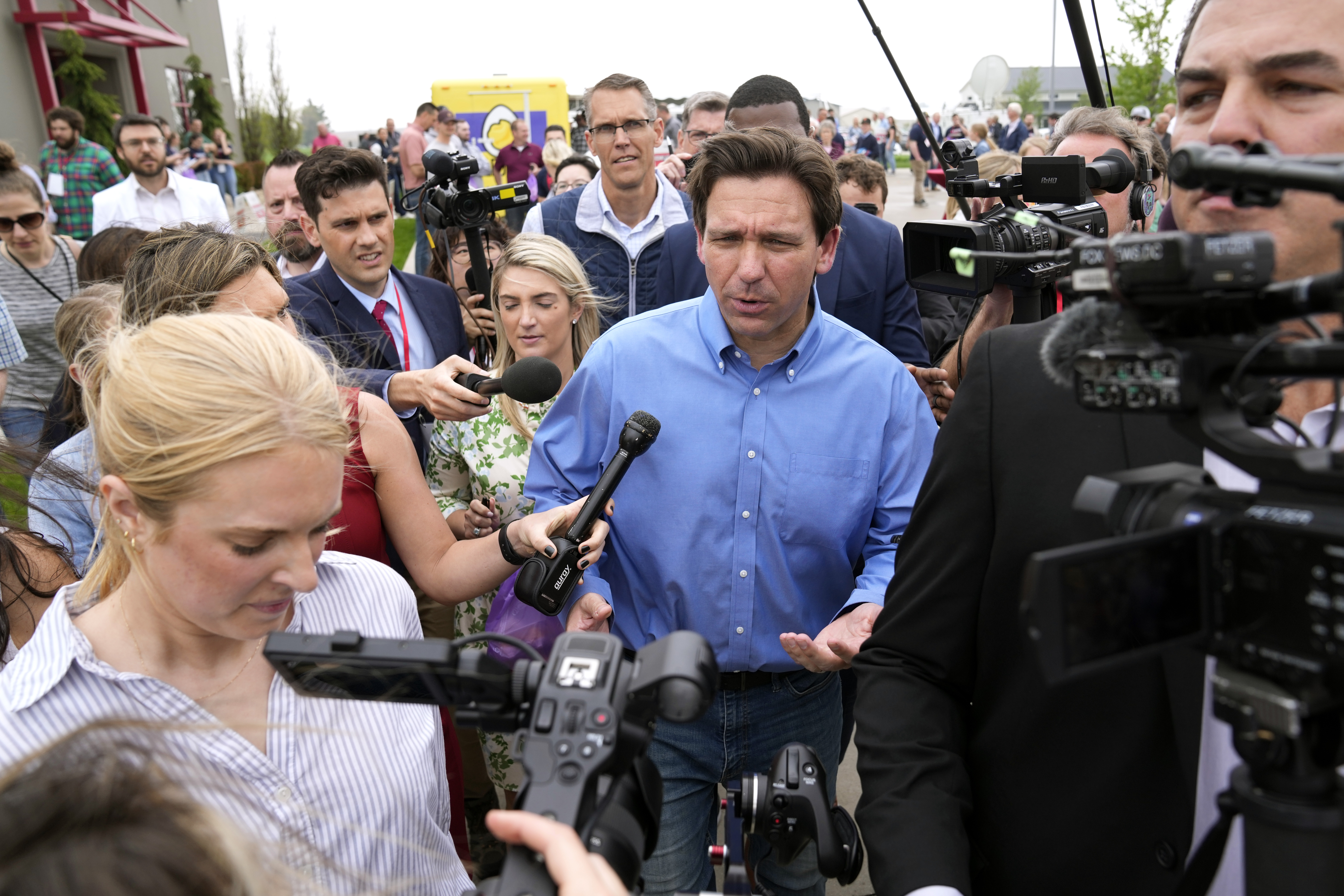This website uses cookies so that we can provide you with the best user experience possible. Cookie information is stored in your browser and performs functions such as recognising you when you return to our website and helping our team to understand which sections of the website you find most interesting and useful.

Earlier this year, DeSantis was running even or narrowly in front of former President Donald Trump in some of the national and early-state GOP primary polls. Since then, the Florida governor’s poll numbers have nose-dived, and he’s barely visible in Trump’s rear-view mirror.
How far has DeSantis fallen? According to RealClearPolitics, his peak in national polling came four months ago, in late January, when he nudged above 31 percent on average. Today, his national polling average has dipped just below 20 percent, the lowest since RCP started tracking last November.
Can DeSantis come back? History provides few clues: The modern presidential primary system is only 50 years old, and the volatility we’ve become used to is newer than that.
Over the past few Republican primary years, a number of candidates have followed the same pattern, surging to the front of the pack only to wilt under scrutiny: Ben Carson, Herman Cain, Rick Perry, Newt Gingrich.
But if DeSantis is going to bounce back and win the nomination, there’s one model from recent history he should follow.
Here are three plausible analogs that DeSantis’ pending candidacy could follow, from best case to worst.
The best-case scenario: John McCain
DeSantis and his orbit may not welcome the comparison to the late senator from Arizona, but McCain started the year before the 2008 primaries in second place behind the frontrunner, Rudy Giuliani, who campaigned lightly in the early states only to overtaken by McCain and others by the time the race hit Giuliani’s beachhead in Florida.
And 2007 was rougher for McCain than 2023 has been for DeSantis: According to RealClearPolitics, McCain was at 21.3 percent in the national polling average on May 20 of that year, down slightly from the start of the campaign. By July, he was nearly broke — a problem DeSantis, who like McCain is a military veteran, isn’t likely to have that quickly. And McCain reached his polling nadir just after Labor Day, bottoming out at about 10 percent.
Why DeSantis could be McCain: As McCain did to Giuliani, DeSantis’ reported focus on Iowa suggests he will seek to outwork Trump in the early states. The early states — McCain finished first in New Hampshire and South Carolina, and second to Mitt Romney in Michigan — were rocket fuel for the Arizonan’s campaign.
For DeSantis, despite his drop in the polls, the majority of Republican voters remain open to his candidacy. Nearly 2-in-3 Republicans in an ABC News/Washington Post poll this month, 64 percent, say they would be satisfied if DeSantis is the nominee, while only 23 percent would be dissatisfied.
What’s different: Trump isn’t necessarily Rudy Giuliani, even if DeSantis pounced on his absence from Iowa last weekend. At this point in 2011, Giuliani was at 27.3 percent in the RealClearPolitics national average, 6 points ahead of McCain. As of late Friday, Trump had a 36-point lead over DeSantis, 56 percent to 19.9 percent.
The could-be-worse scenario: Rick Perry
Like DeSantis, Perry was a big-state governor hailed as the future of the GOP. Other candidates led the field upon Perry’s entrance, but a strong first month catapulted the then-Texas governor to the front.
DeSantis would do well to emulate Perry’s launch. But he’d obviously need to avoid the pitfalls that doomed Perry’s campaign in the fall of 2011.
Why DeSantis could be Perry: Money and momentum. By all accounts, DeSantis is planning to launch with a splash. And while his nearly $100 million Florida war chest can’t be used directly by his campaign,an allied super PAC is already amplifying his message.
Perry entered the race in August, and by mid-September, he had a 12-point lead in the national polls over Romney, the eventual nominee.
That was Perry’s pinnacle, however. His campaign quickly was undone by a series of controversies and missteps, especially on the debate stage.
What’s different: Unlike Perry, DeSantis is entering a race with a clearly defined frontrunner. On Perry’s launch day, he was just 5 points behind Romney, 21 percent to 16.2 percent. And enthusiasm among big donors for DeSantis’ candidacy has seemed to ebb and flow, rather than building steam leading into his launch.
The worst-case scenario: Jeb Bush
It’s not just because they’ve both been governor of Florida. On this day eight years ago, Bush (15.4 percent) actually led in the RealClearPolitics average over a fellow Floridian, Sen. Marco Rubio (13.2 percent) and then-Wisconsin Gov. Scott Walker (13.2 percent).
But by mid-July of 2015, he’d surrendered his lead to Trump for good.
Why DeSantis could be Jeb!: There are some parallels between the two men. Like Bush, DeSantis won a narrow first election for governor, only to get reelected far more easily the second time.
Bush was heavily reliant on an outside super PAC, Right to Rise, that could run TV ads on his behalf but couldn’t coordinate with his campaign. DeSantis’ Florida campaign funds are likely to end up in a similar vehicle.
What’s different: Unlike Bush — who was term-limited out of Tallahassee in 2006 but didn’t run for president until 2016 — DeSantis isn’t yesterday’s news. He’s used his pre-campaign period to burnish his conservative credentials, while Bush spent his time out of office on a number of projects, some ideological and others not.
And will DeSantis go directly at Trump the way Bush did eight years ago? His jabs at the former president have been more subtle and typically aimed from the right (a tactic Bush tried occasionally, too).



 Africana55 Radio
Africana55 Radio 
